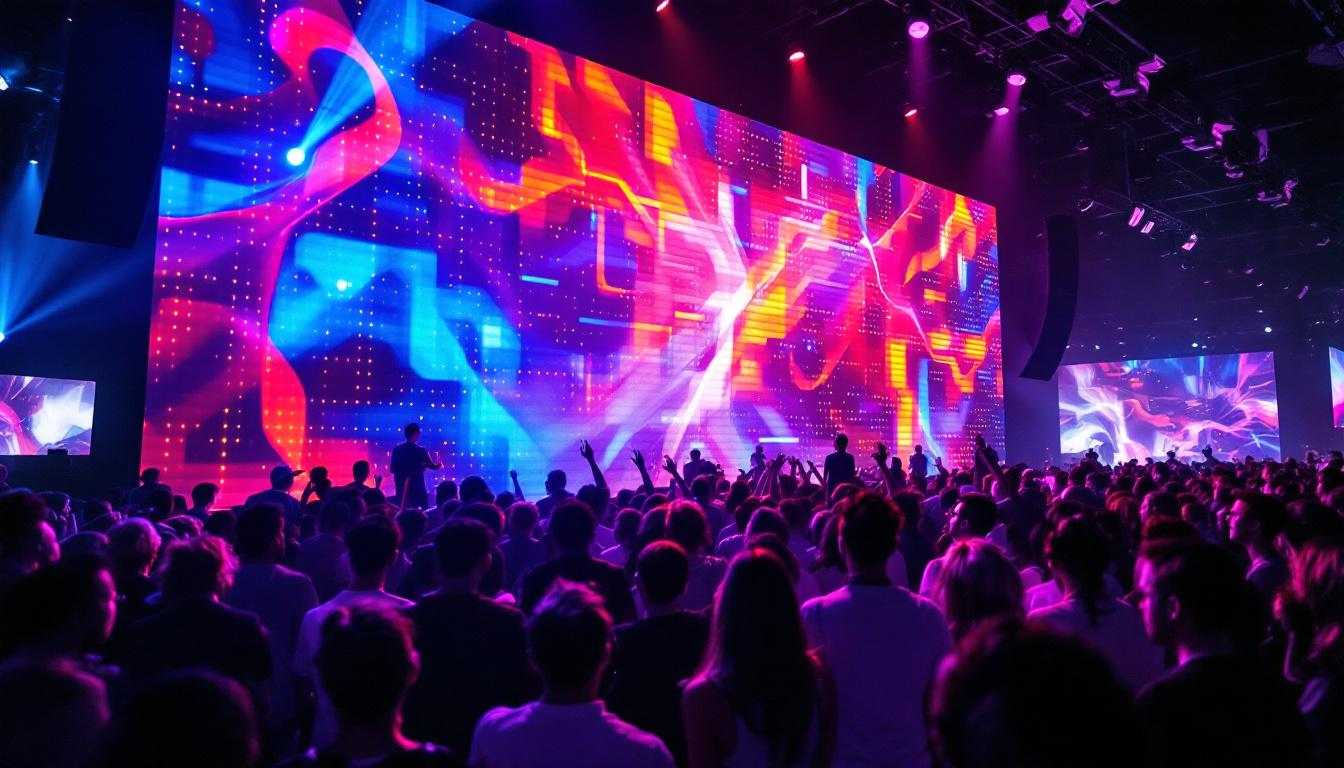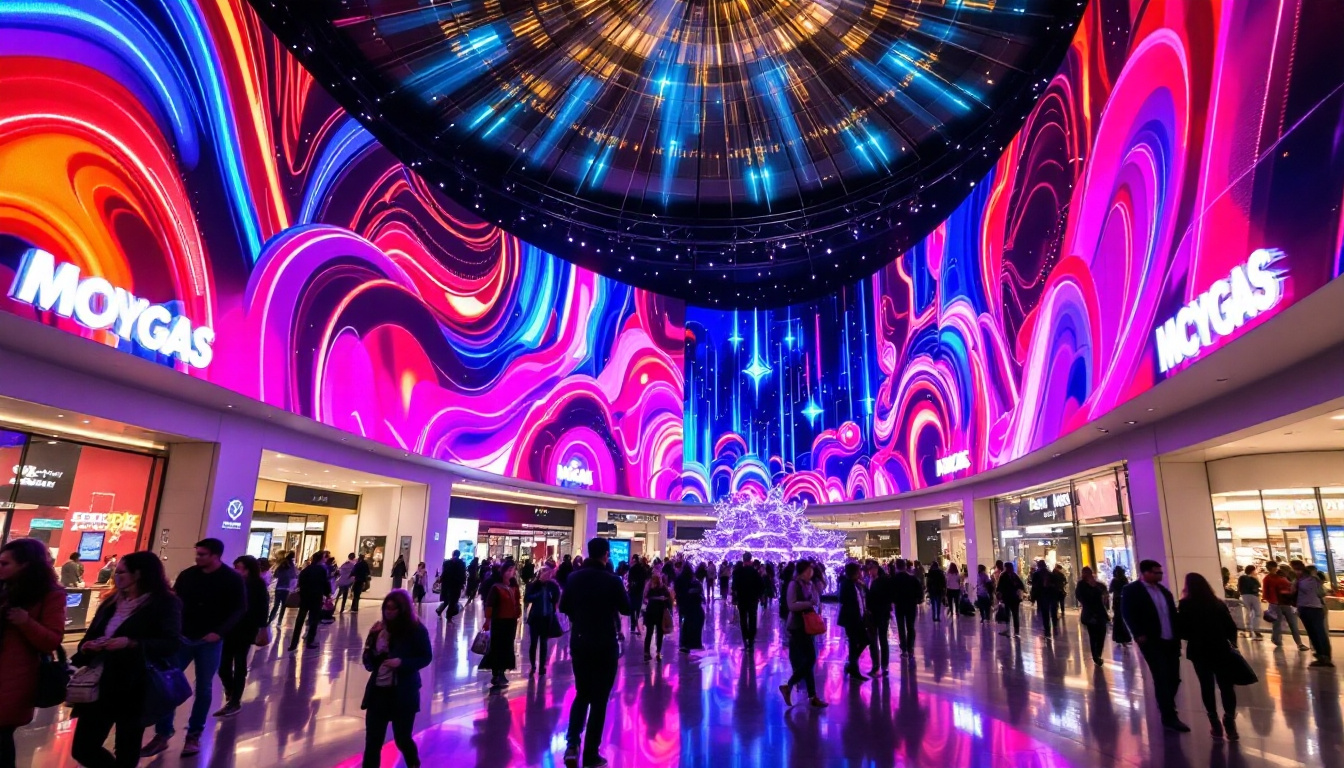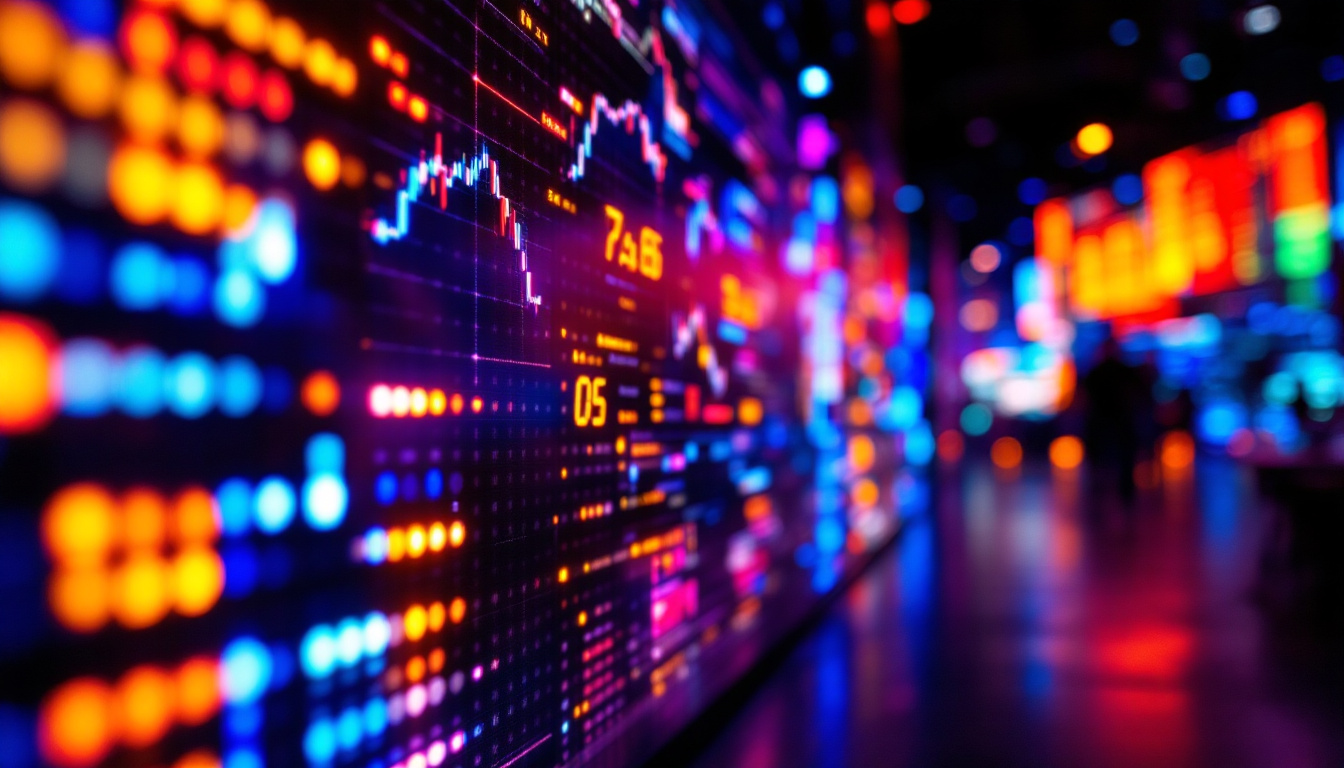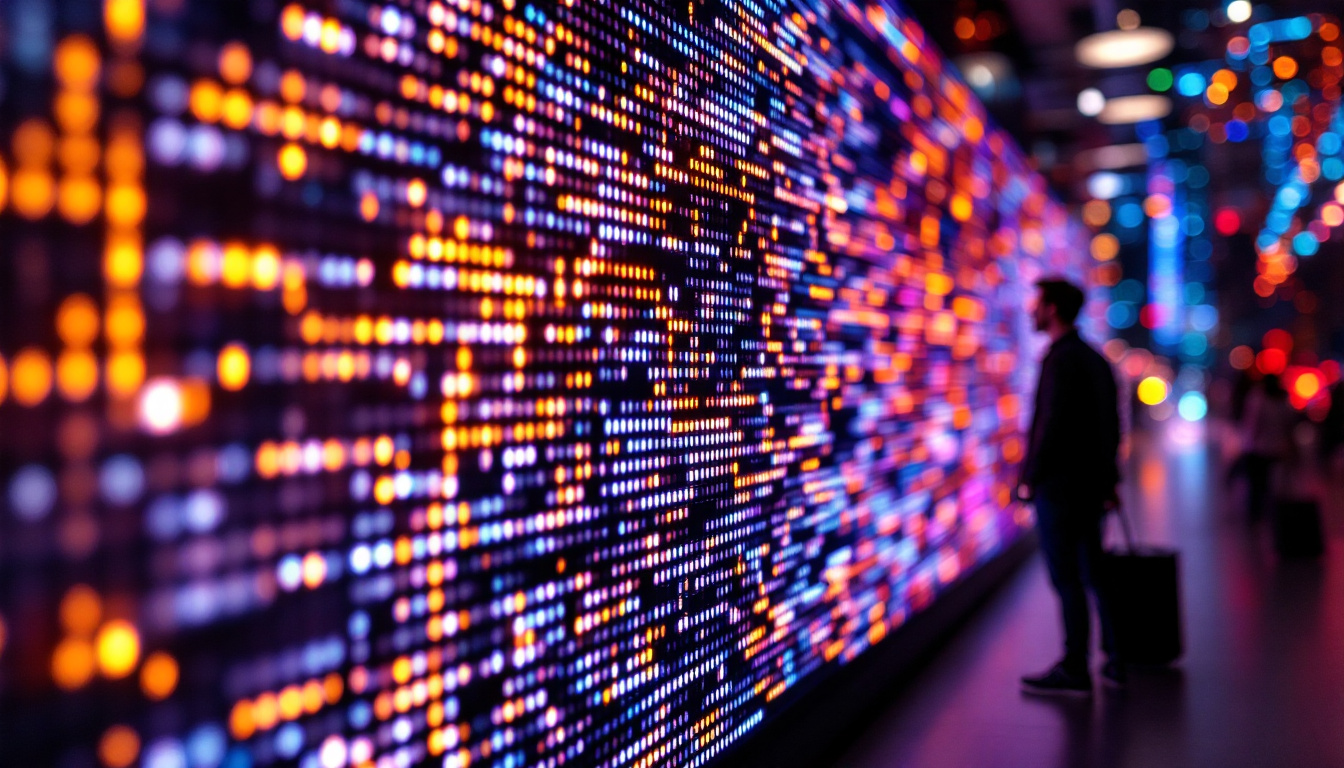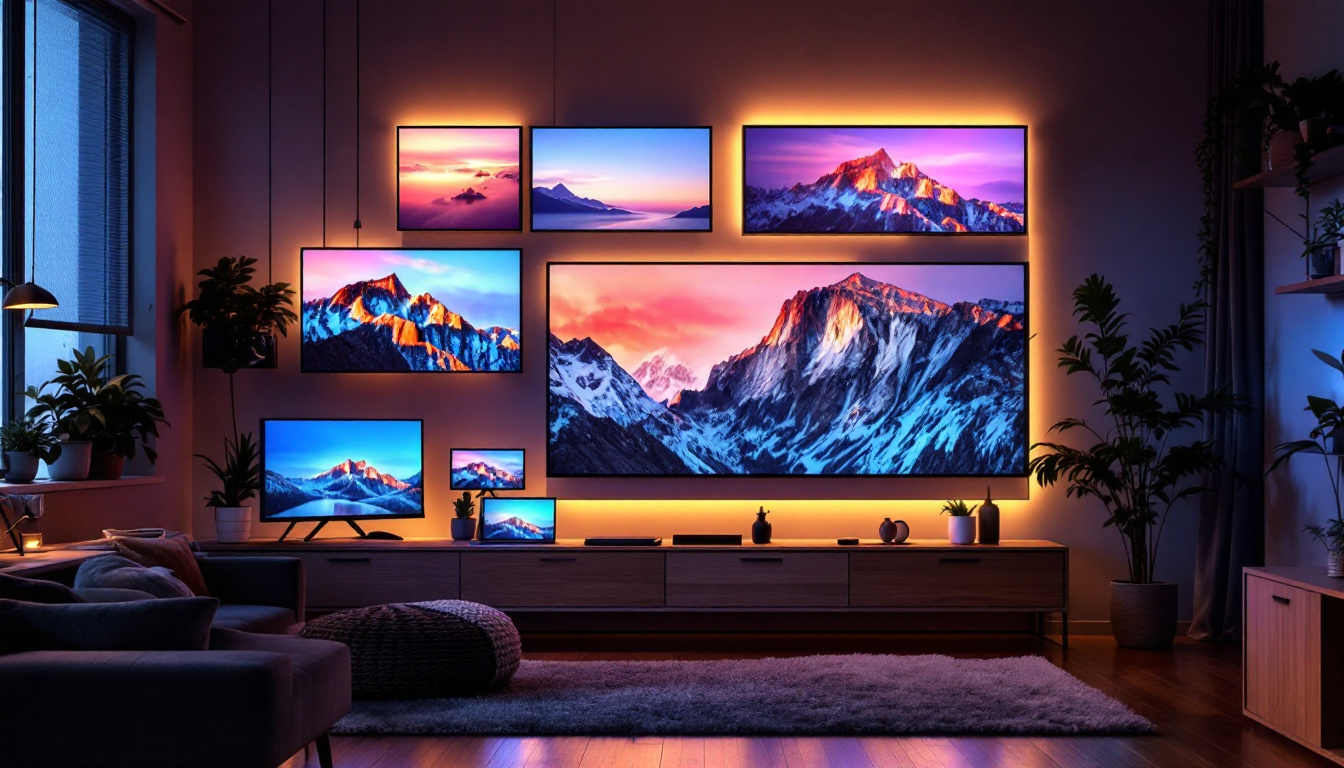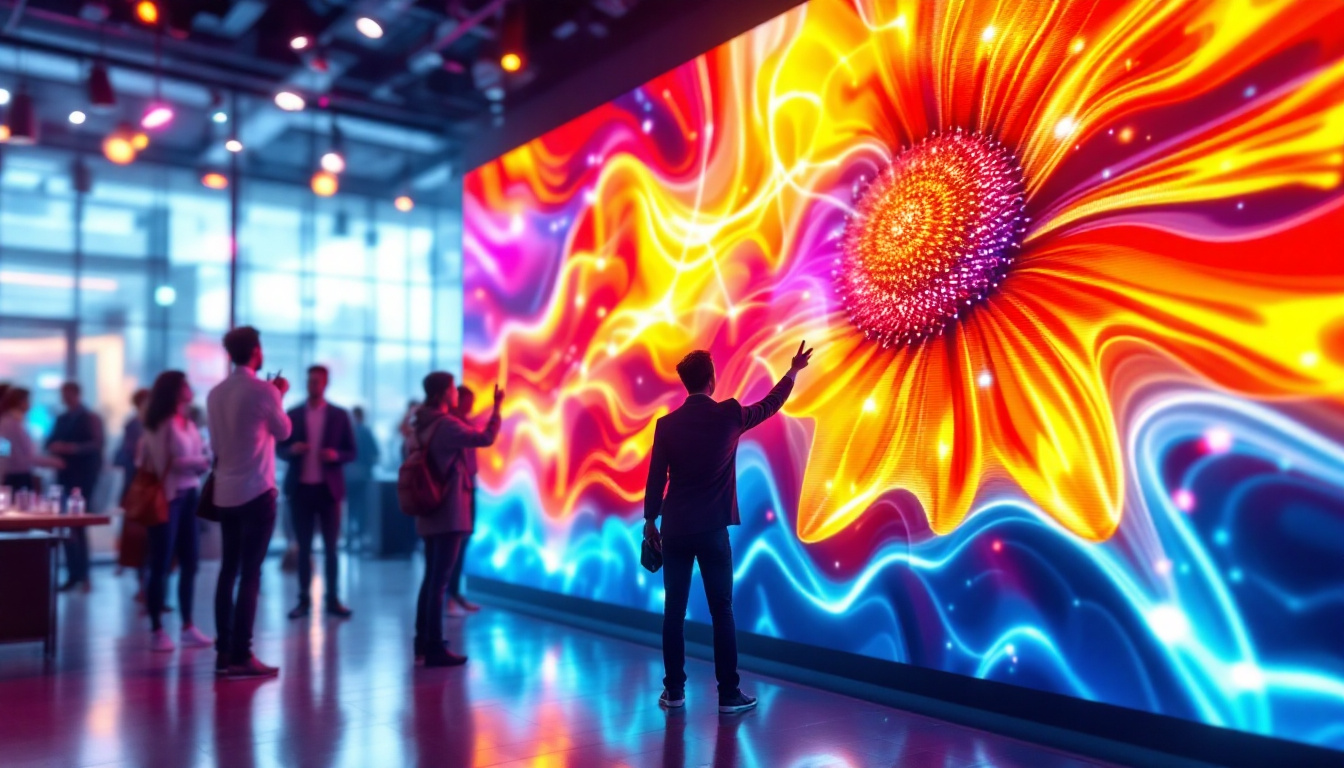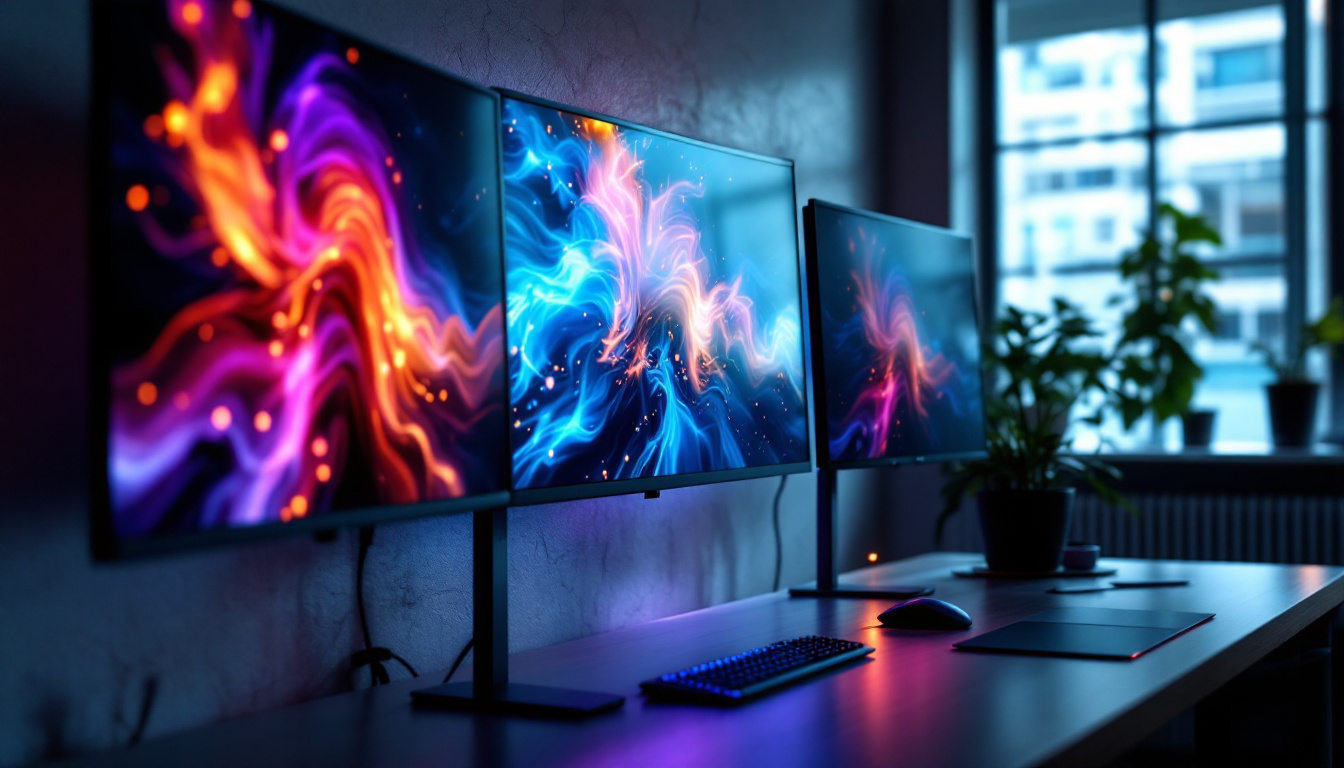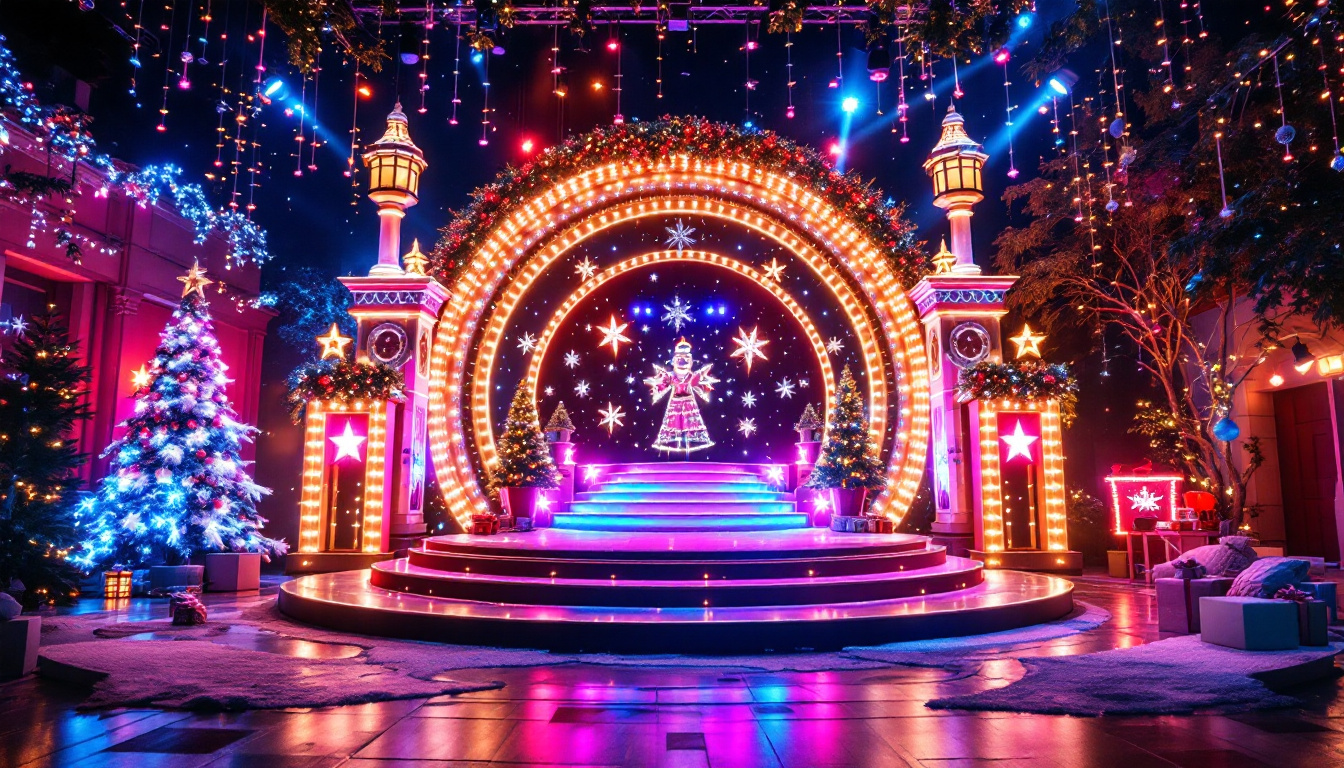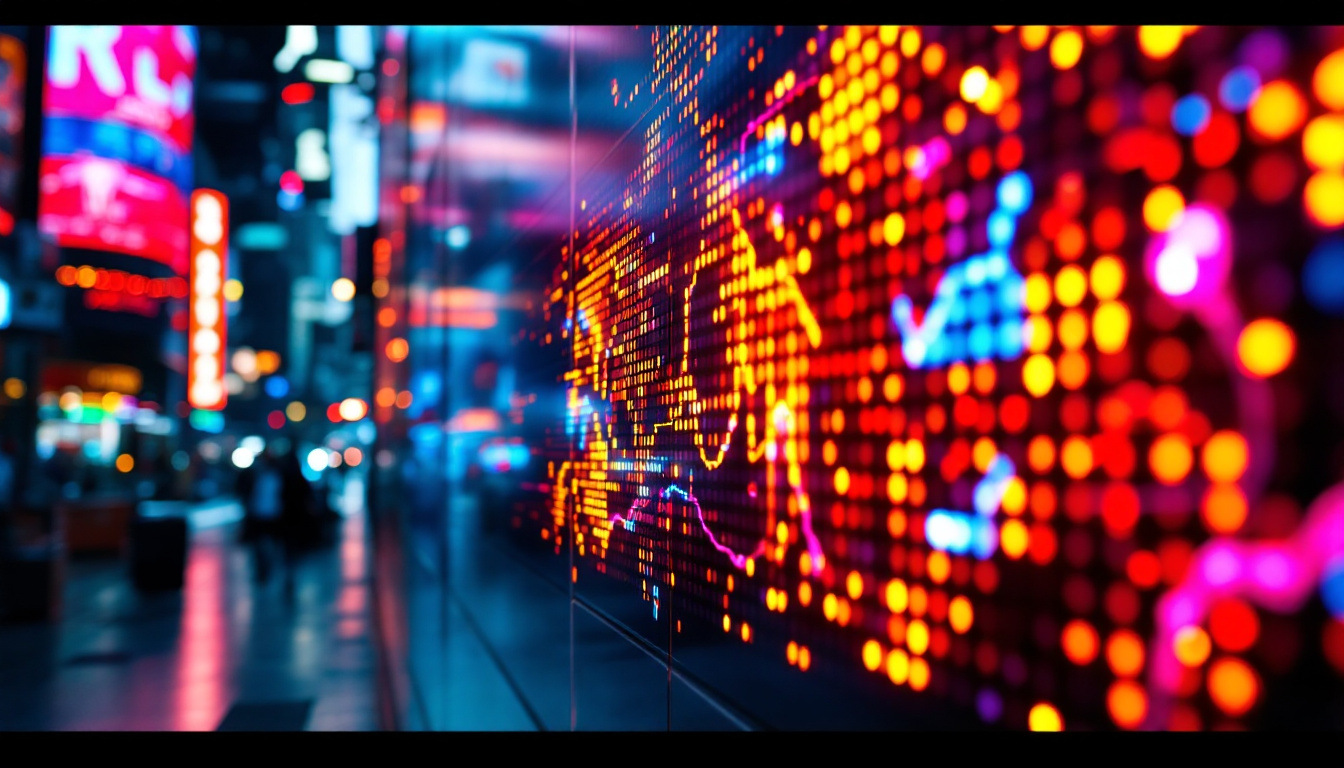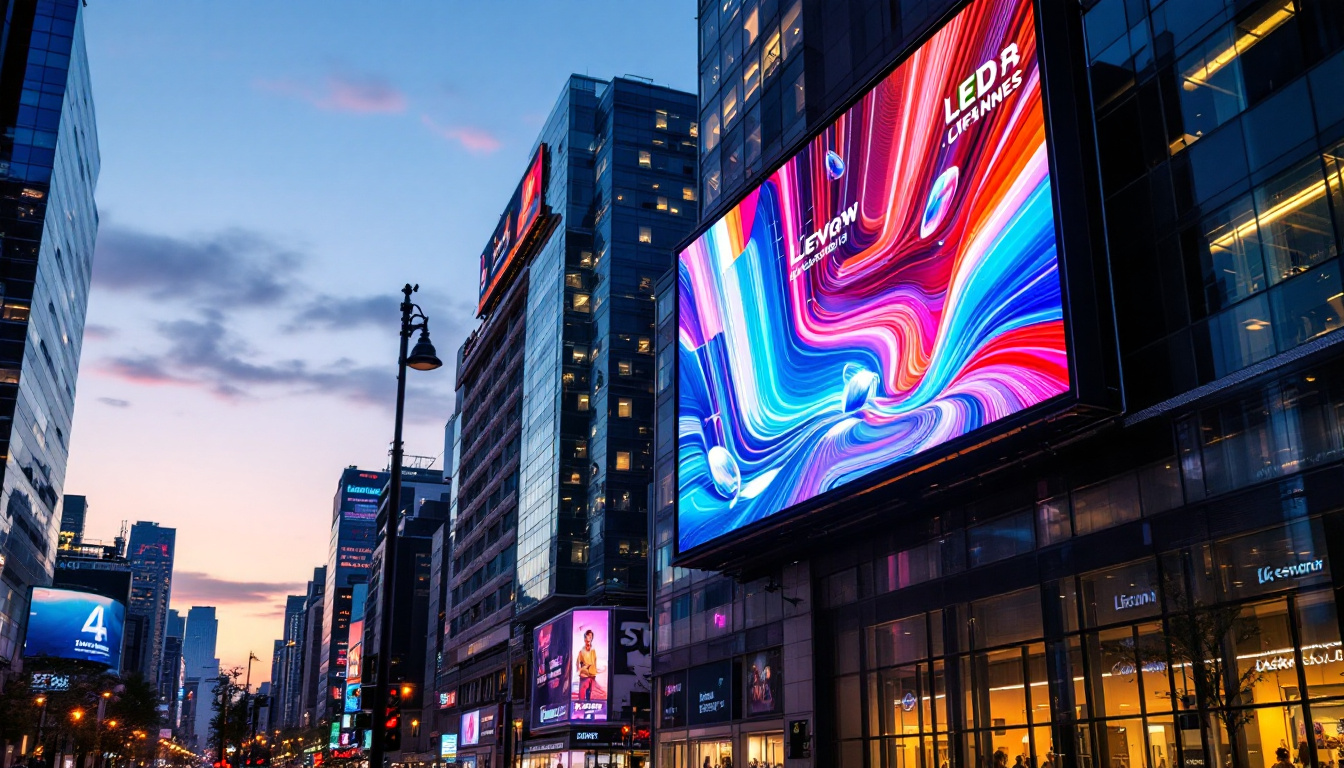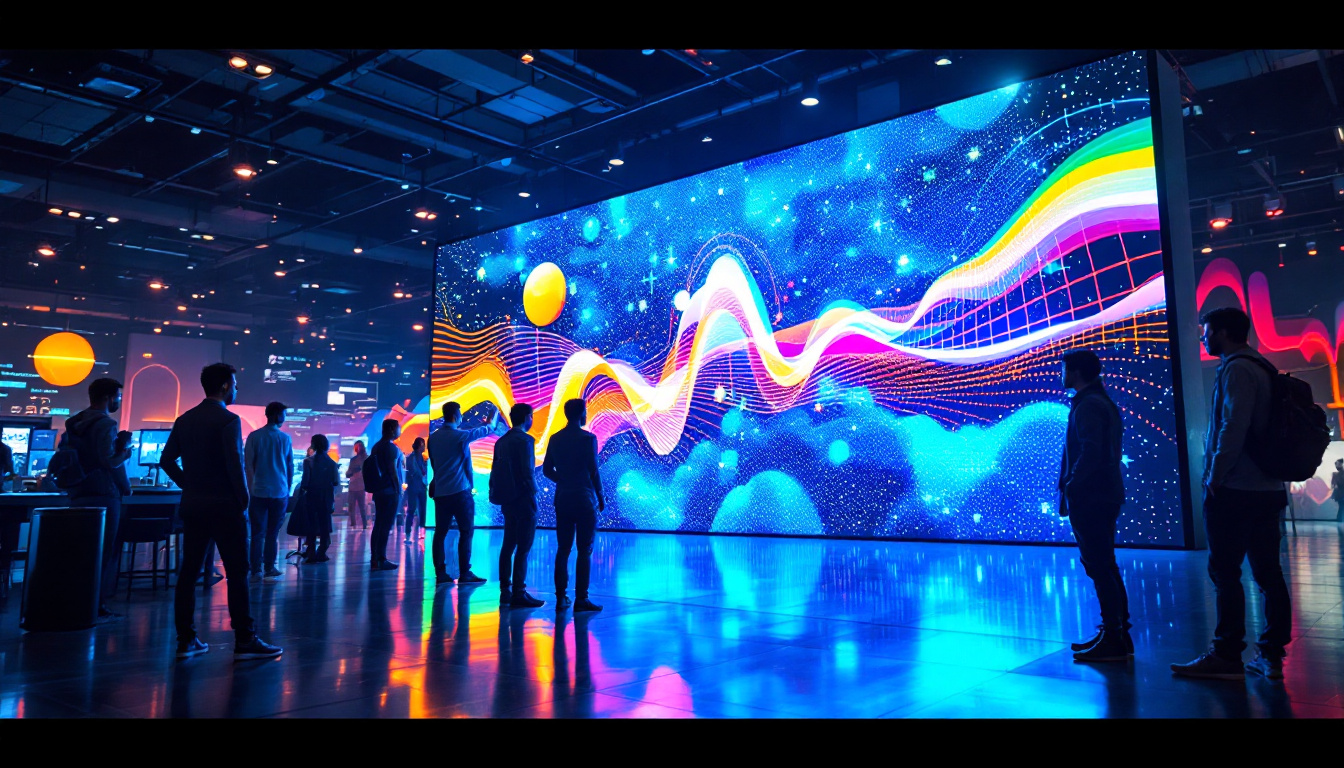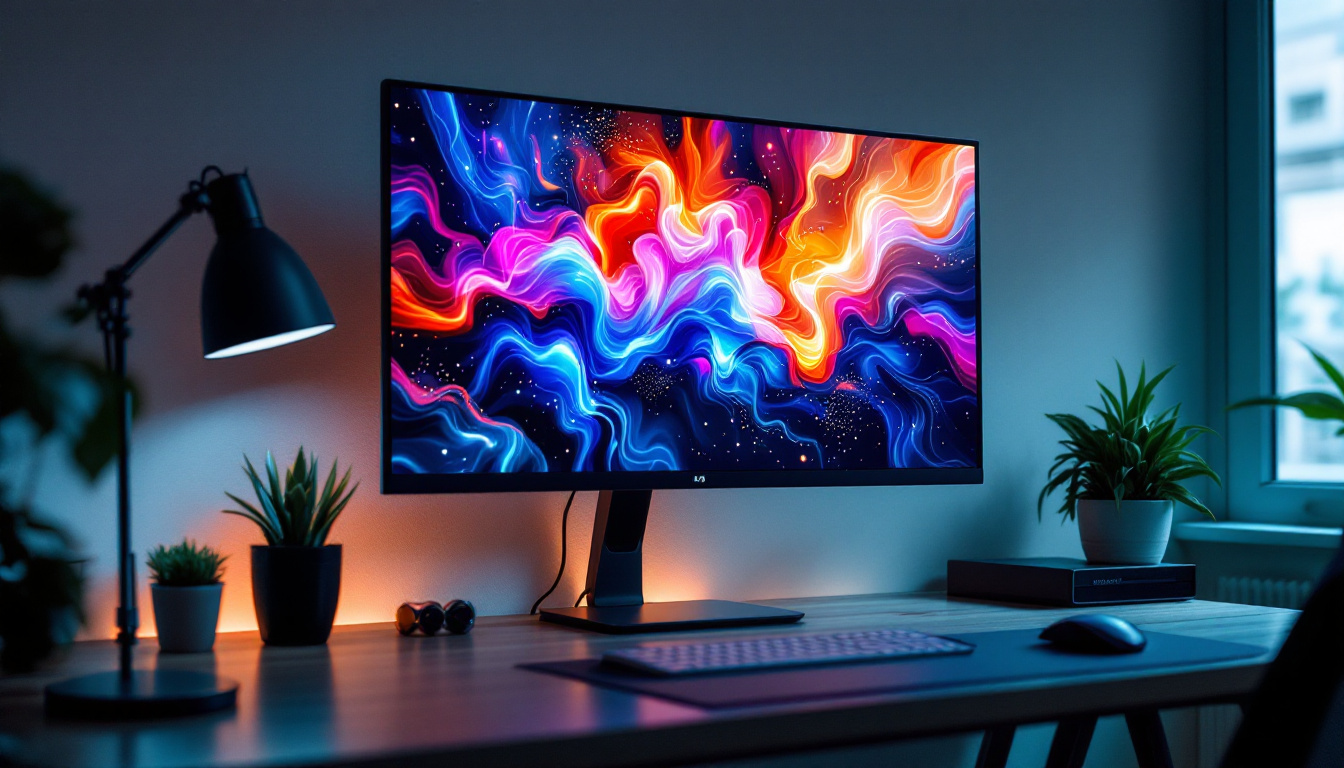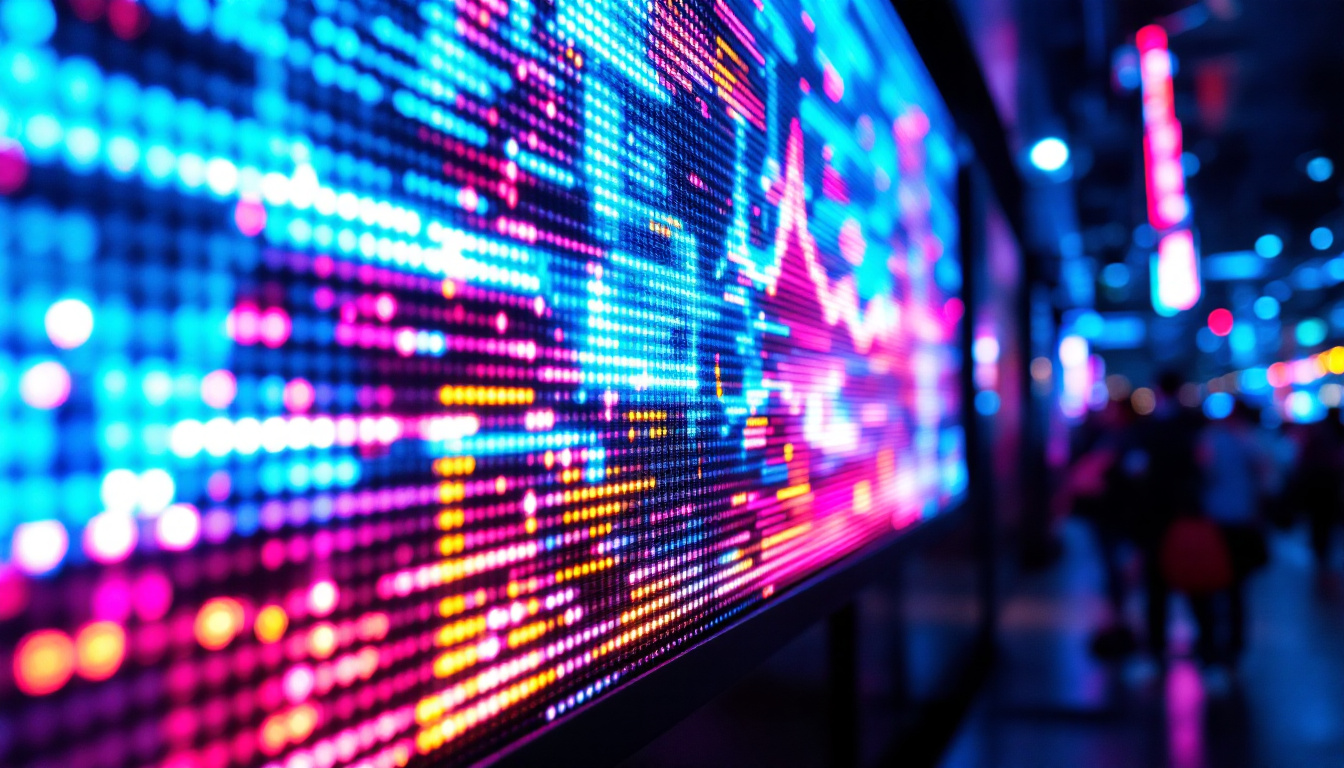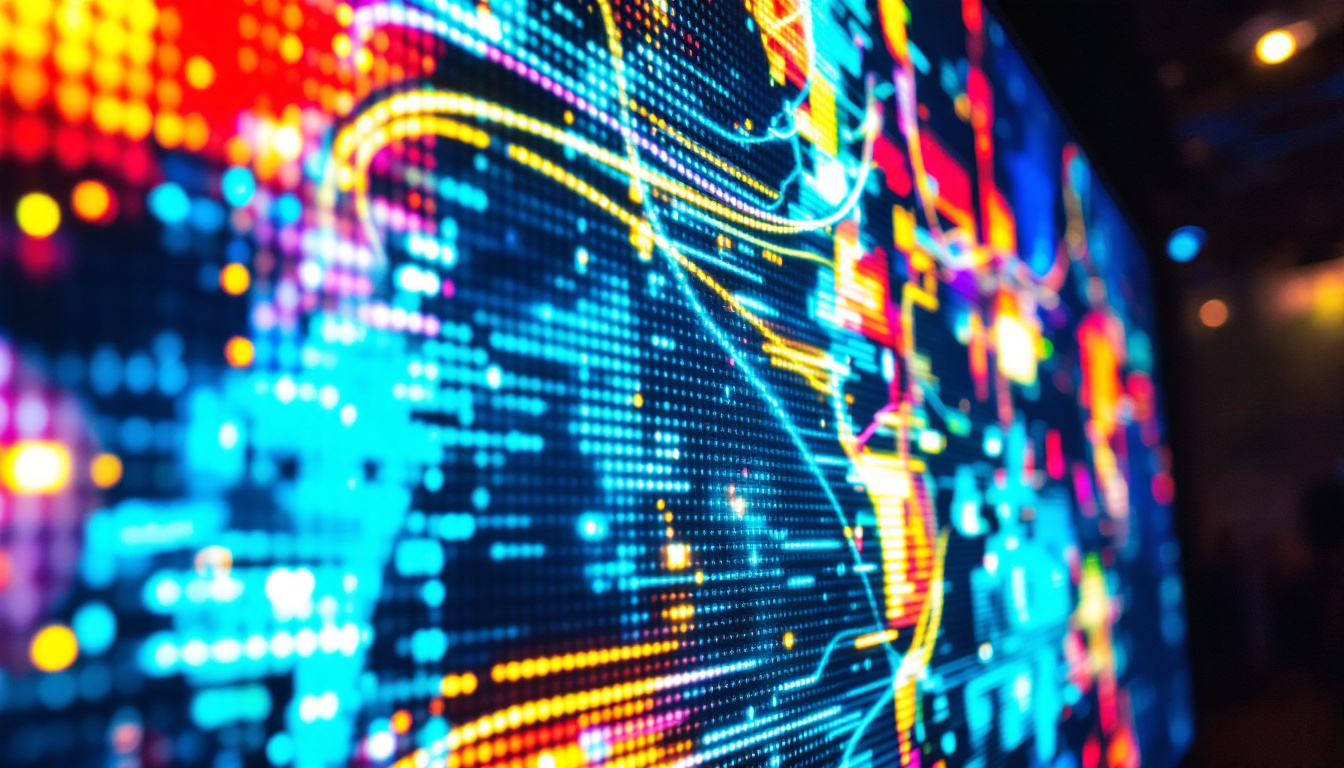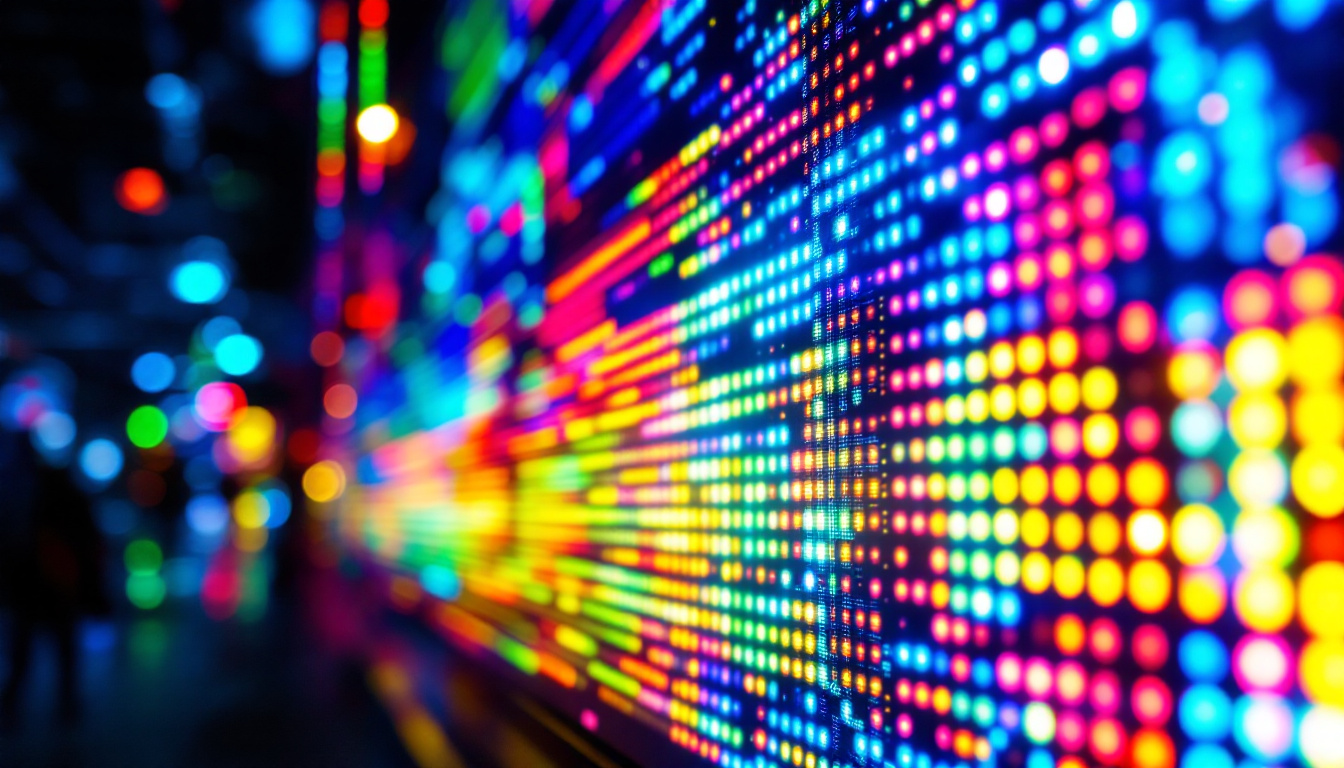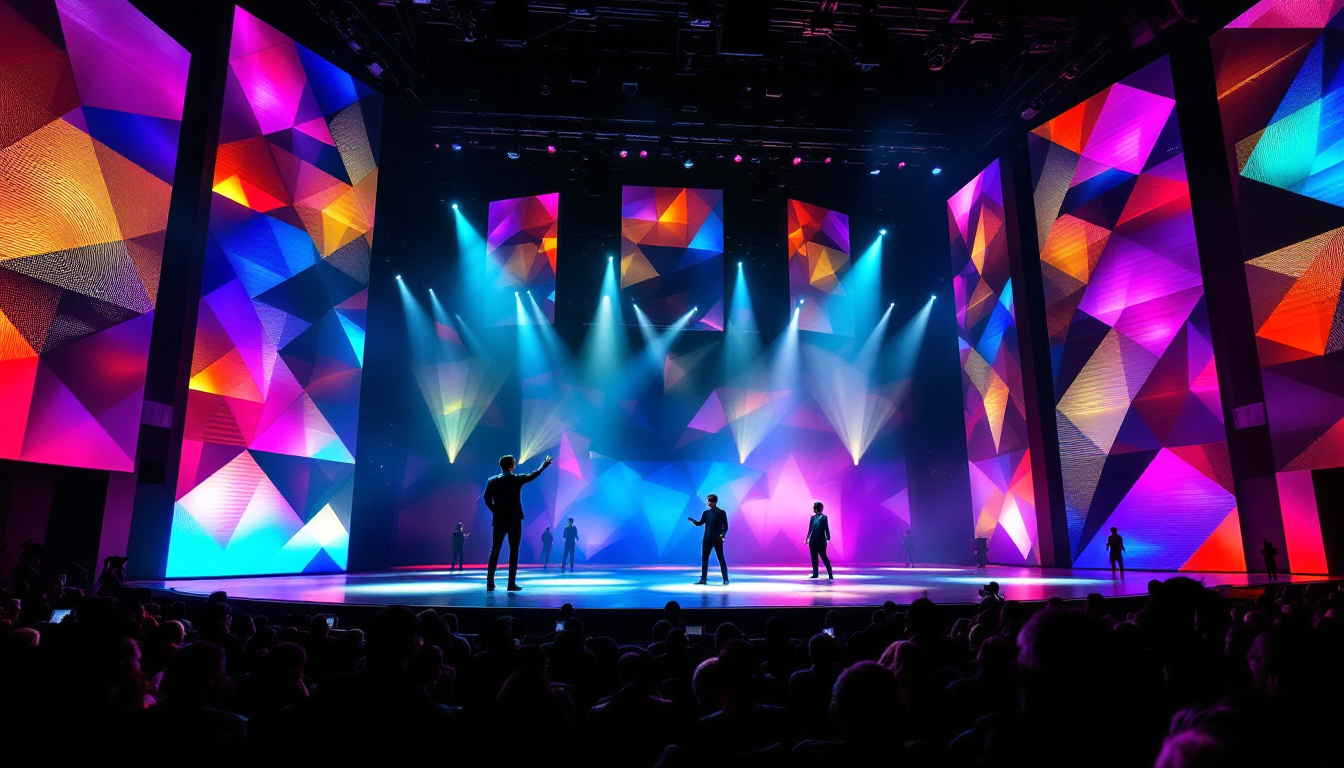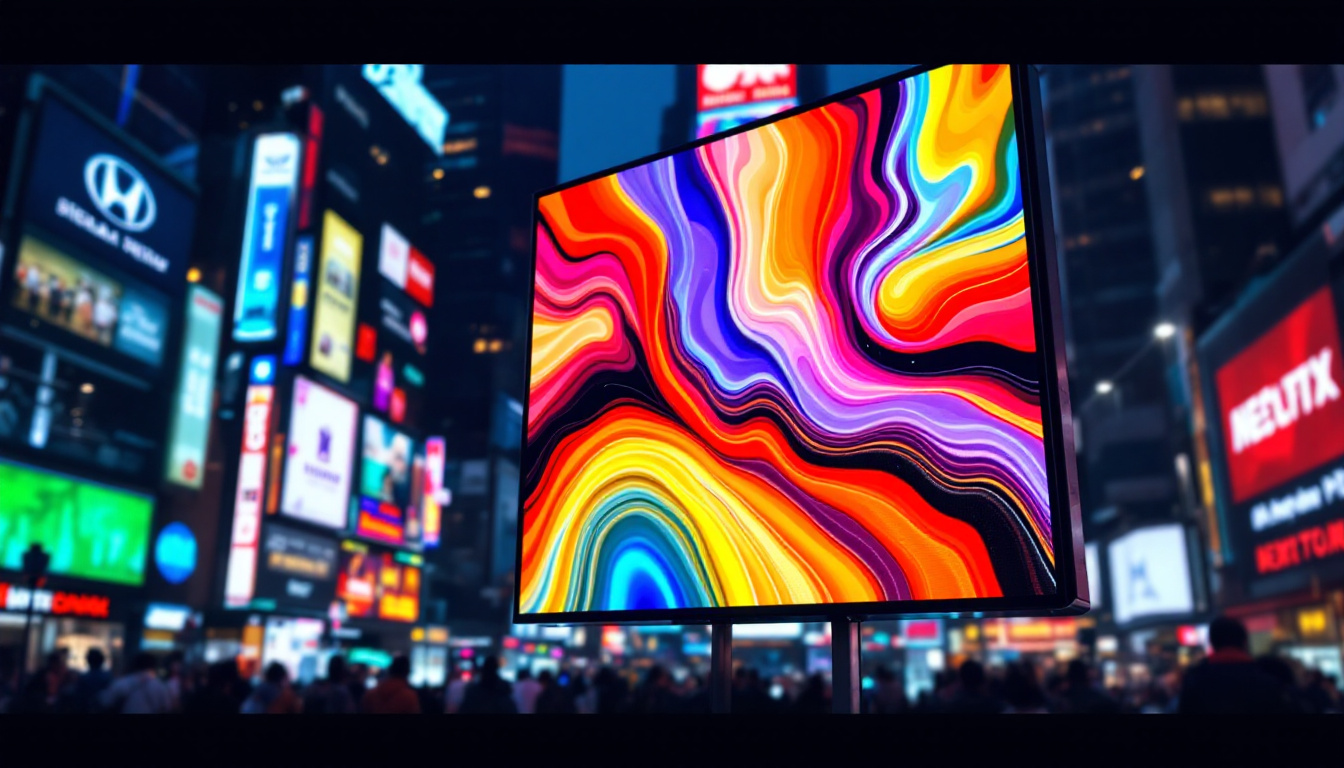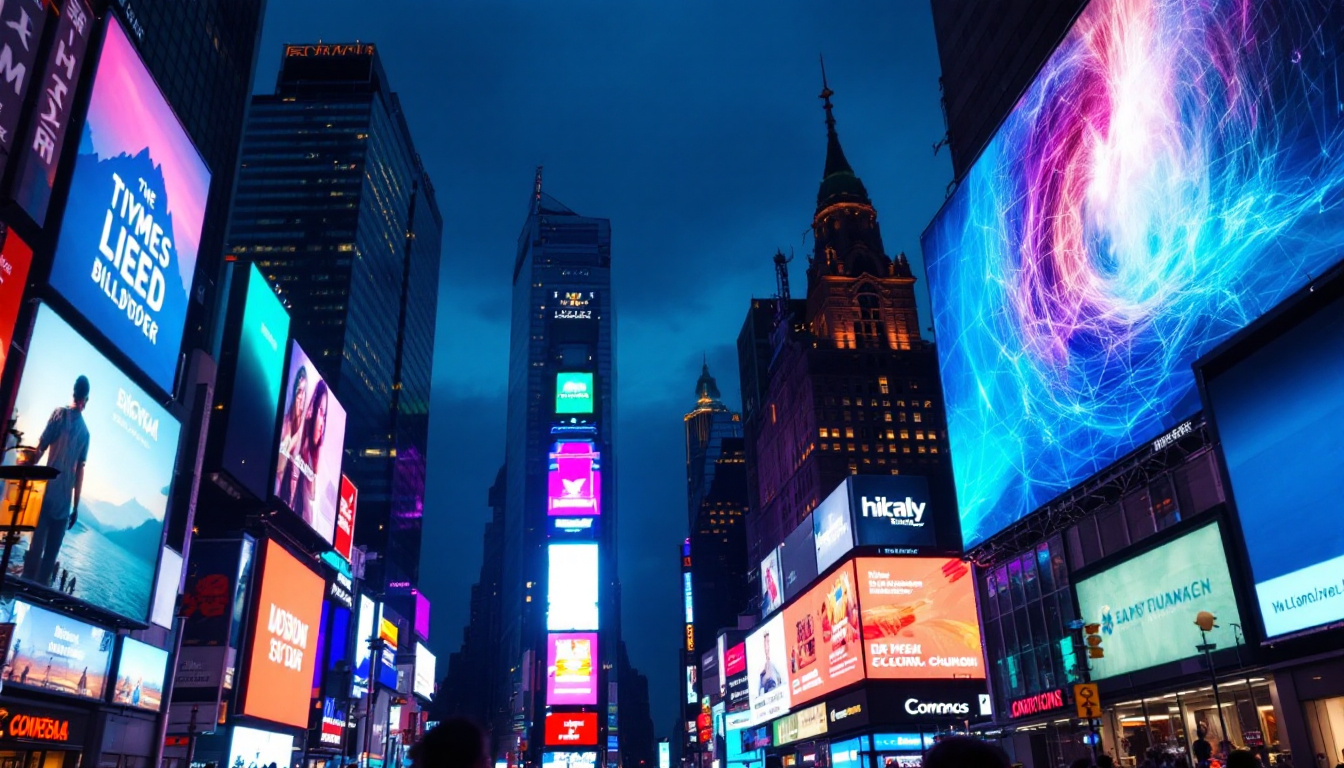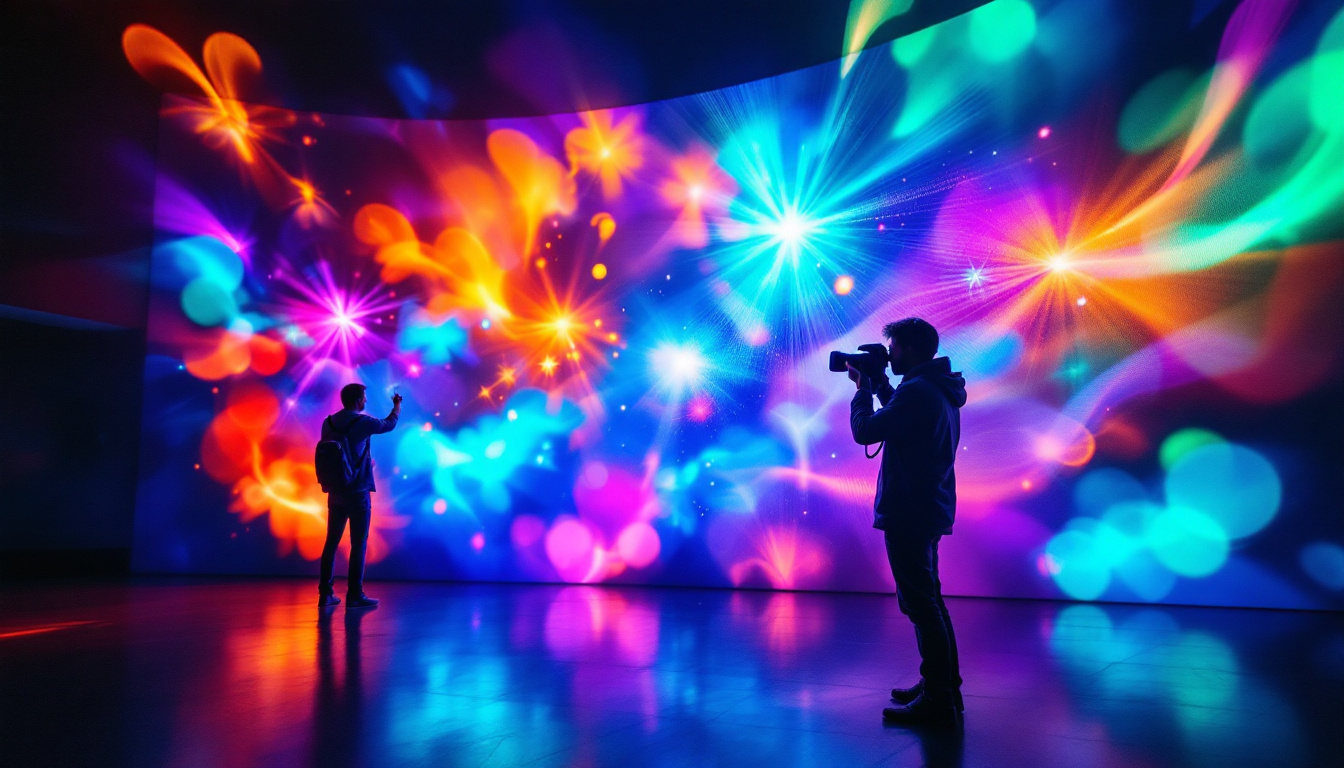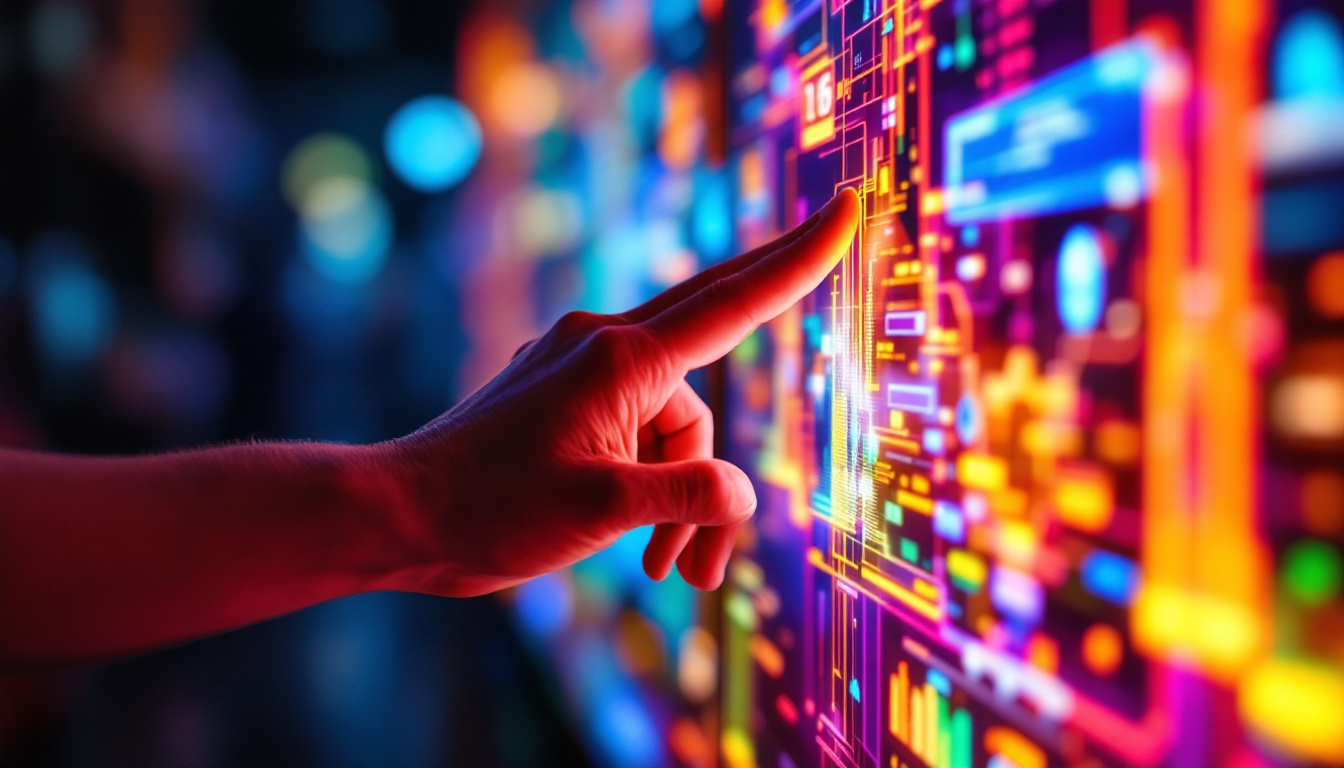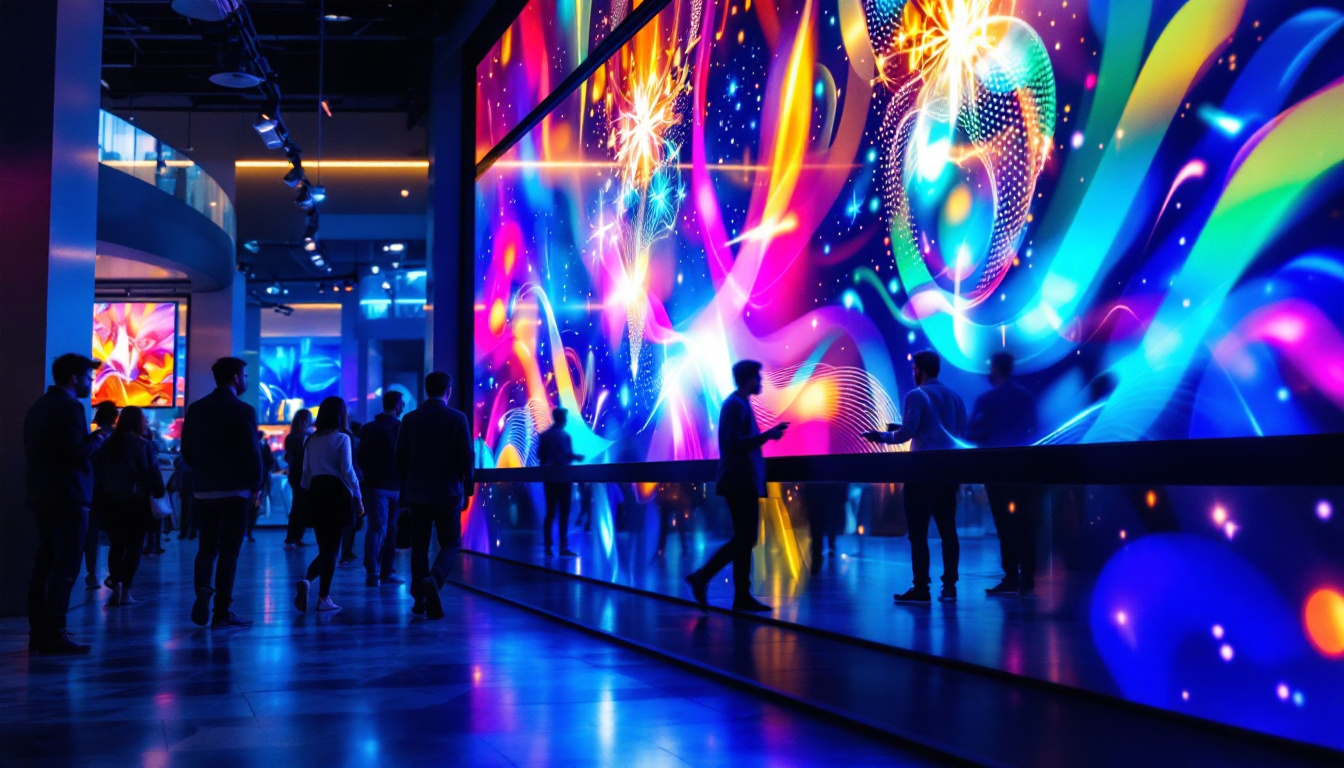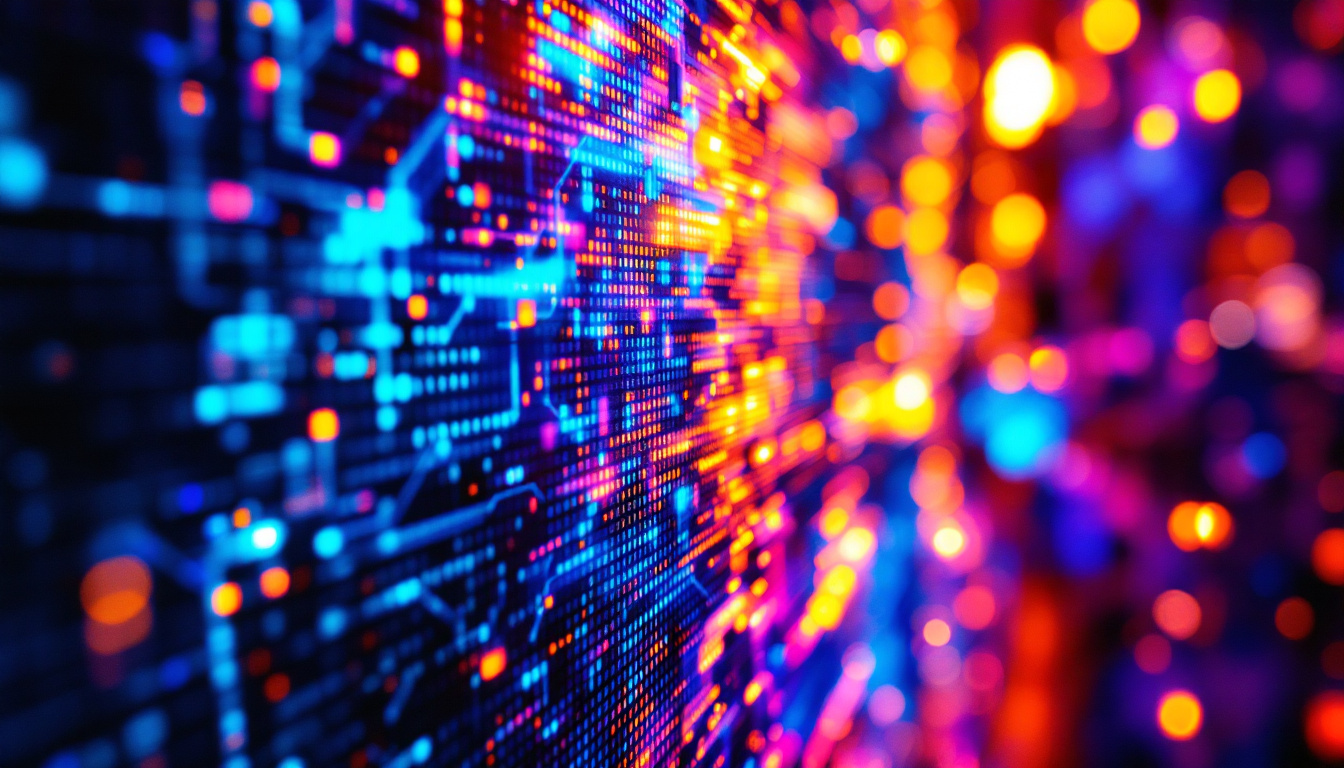In today’s fast-paced world, the demand for high-quality visual displays has surged, particularly in the realms of entertainment, advertising, and information dissemination. LED displays have emerged as a leading technology in this field, offering vibrant colors, energy efficiency, and versatility. This article delves into the intricacies of LED displays, focusing on their applications, advantages, and the technology behind them.
Understanding LED Technology
Light Emitting Diodes (LEDs) are semiconductor devices that emit light when an electric current passes through them. The fundamental principle behind LED technology is electroluminescence, where electrons recombine with holes in the semiconductor material, releasing energy in the form of photons. This process is what allows LEDs to produce bright and vivid colors, making them ideal for display applications. The efficiency of LEDs is remarkable, as they convert a significant portion of electrical energy into light, which not only reduces energy consumption but also minimizes heat generation compared to traditional incandescent bulbs.
Types of LEDs
LEDs can be categorized into several types, each with unique characteristics and applications. The most common types include:
- Standard LEDs: Used primarily for indicator lights and simple displays.
- High-Power LEDs: Designed for applications requiring intense light output, such as automotive headlights.
- RGB LEDs: Capable of producing a wide spectrum of colors by combining red, green, and blue light.
Each type of LED serves different purposes, but RGB LEDs are particularly significant in the context of displays, as they can create a full range of colors by varying the intensity of each individual color. Beyond these common types, there are also specialized LEDs such as Ultraviolet (UV) LEDs, which are used in applications ranging from sterilization to curing adhesives, and Infrared (IR) LEDs, which play a crucial role in remote controls and night vision devices. The versatility of LED technology continues to expand, leading to innovative uses across various industries.
The Basics of LED Displays
LED displays are composed of numerous individual LEDs arranged in a grid-like pattern. These displays can be classified into two main categories: direct view and backlit.
Direct view LED displays utilize the individual LEDs to create images directly, while backlit displays use LEDs to illuminate a liquid crystal display (LCD) panel. Direct view displays are often used in large outdoor screens, while backlit displays are more common in televisions and computer monitors. The resolution of these displays can vary significantly, with direct view displays often featuring higher pixel densities to ensure clarity and detail in larger formats. Additionally, advancements in LED technology have led to the development of flexible LED displays, which can be curved or shaped to fit unconventional spaces, further enhancing their application in modern architecture and design.
Applications of LED Displays
LED displays have found their way into various sectors, revolutionizing how information is presented and consumed. Their applications can be broadly categorized into several areas:
Advertising and Marketing
One of the most prominent uses of LED displays is in advertising. Digital billboards and signage have become ubiquitous in urban environments, capturing the attention of passersby with dynamic content. The ability to change advertisements quickly and remotely allows businesses to target specific audiences effectively.
Moreover, LED displays can display high-resolution images and videos, making them more engaging than traditional static billboards. This capability not only enhances brand visibility but also improves the overall aesthetic of the environment. The integration of sensors and analytics can further optimize advertising strategies, allowing businesses to tailor their messages based on real-time data such as foot traffic and demographic information, thus maximizing their return on investment.
Entertainment Venues
In the entertainment industry, LED displays play a crucial role in enhancing the audience experience. Concerts, sporting events, and theater productions utilize large LED screens to provide visual effects, real-time information, and immersive experiences.
These displays can be configured in various shapes and sizes, allowing for creative installations that complement the performance. For instance, curved LED screens can wrap around stages, creating a more engaging atmosphere for the audience. Additionally, advancements in technology have led to the development of transparent LED displays, which can be integrated into stage designs without obstructing the view, further enhancing the visual storytelling of performances. This innovative use of LED technology not only captivates audiences but also opens new avenues for artistic expression.
Information Dissemination
LED displays are also widely used for informational purposes, such as in transportation hubs, retail environments, and public spaces. Train stations and airports use LED screens to display real-time updates on arrivals and departures, ensuring passengers have the latest information at their fingertips.
In retail, LED displays can showcase promotions, product information, and even interactive content, enhancing the shopping experience. Public spaces, such as parks and plazas, utilize LED displays for community announcements and event promotions, fostering a sense of connection among residents. Furthermore, the adaptability of LED technology allows for the incorporation of multilingual displays, ensuring that information is accessible to diverse populations. This inclusivity is particularly important in multicultural urban areas, where effective communication can significantly enhance community engagement and participation in local events.
Advantages of LED Displays
LED displays offer numerous advantages over traditional display technologies, making them a preferred choice for many applications. Some of the key benefits include:
Energy Efficiency
One of the most significant advantages of LED technology is its energy efficiency. LED displays consume considerably less power compared to traditional incandescent or fluorescent lighting. This efficiency not only reduces operational costs but also minimizes the environmental impact.
Furthermore, the longevity of LED displays contributes to their sustainability. LEDs can last tens of thousands of hours, resulting in fewer replacements and less waste over time.
High Brightness and Visibility
LED displays are known for their high brightness levels, making them suitable for both indoor and outdoor applications. Their ability to maintain visibility in bright sunlight is a crucial factor for outdoor advertising and public information displays.
Additionally, the contrast ratio of LED displays is superior to that of traditional displays, allowing for clearer images and text. This feature is particularly important in environments with varying lighting conditions.
Flexibility and Versatility
LED displays can be customized to fit various shapes and sizes, providing unparalleled flexibility for designers and advertisers. They can be mounted on walls, suspended from ceilings, or even integrated into architectural elements.
This versatility extends to their content capabilities as well. LED displays can showcase static images, videos, animations, and interactive content, allowing for dynamic storytelling and engagement with the audience.
The Technology Behind LED Displays
Understanding the technology that powers LED displays can provide valuable insights into their functionality and performance. Several key components contribute to the overall effectiveness of these displays:
Pixel Configuration
The pixel configuration of an LED display refers to how individual LEDs are arranged to form a complete image. Each pixel typically consists of three sub-pixels—red, green, and blue—allowing for the creation of various colors through color mixing.
Pixel pitch, which is the distance between the centers of two adjacent pixels, plays a critical role in determining the display’s resolution. Smaller pixel pitches result in higher resolutions, making them ideal for applications requiring detailed images, such as indoor displays in shopping malls or conference centers.
Control Systems
Control systems are essential for managing the content displayed on LED screens. These systems can range from simple controllers that manage static images to complex software solutions that allow for real-time updates and interactive content.
Advanced control systems enable seamless integration with other technologies, such as social media feeds, live video streams, and data-driven content, enhancing the overall viewer experience.
Calibration and Maintenance
To ensure optimal performance, LED displays require regular calibration and maintenance. Calibration involves adjusting the brightness, color balance, and other settings to achieve consistent image quality across the display.
Maintenance is equally important, as it helps identify and rectify any issues that may arise over time. Regular inspections and cleaning can prolong the lifespan of the display and maintain its visual appeal.
Future Trends in LED Display Technology
The LED display industry is continuously evolving, with new technologies and trends emerging to enhance performance and user experience. Some of the most notable trends include:
MicroLED Technology
MicroLED technology represents the next generation of LED displays, utilizing microscopic LEDs to create images. This technology offers several advantages, including higher brightness levels, improved energy efficiency, and better color accuracy.
MicroLED displays also have the potential to be more flexible and lightweight, opening up new possibilities for innovative installations and applications.
Integration with Augmented Reality (AR) and Virtual Reality (VR)
As AR and VR technologies gain traction, the integration of LED displays with these immersive experiences is becoming increasingly common. LED displays can serve as platforms for AR content, enhancing the interaction between the physical and digital worlds.
In the context of VR, LED displays can be used to create large-scale environments that immerse users in virtual experiences, expanding the possibilities for entertainment, education, and training.
Smart Displays
The rise of the Internet of Things (IoT) is paving the way for smart LED displays that can connect to the internet and communicate with other devices. These displays can gather data, analyze viewer behavior, and adapt content in real-time, creating a more personalized experience for users.
Smart displays can also enhance operational efficiency by providing insights into performance metrics, allowing businesses to optimize their advertising strategies and improve engagement.
Conclusion
LED displays have transformed the way information is communicated and consumed across various industries. Their vibrant colors, energy efficiency, and versatility make them an ideal choice for advertising, entertainment, and information dissemination. As technology continues to evolve, LED displays are set to become even more advanced, integrating with emerging technologies and providing enhanced experiences for users.
Understanding the intricacies of LED displays not only highlights their significance in modern society but also underscores the potential for future innovations that will further enhance their capabilities. As businesses and organizations continue to explore the possibilities of LED technology, the impact of these displays will undoubtedly grow, shaping the way we interact with the world around us.
Discover LumenMatrix’s Innovative LED Solutions
As you consider the vast potential and applications of LED display technology, take the next step with LumenMatrix. Our commitment to innovation positions us at the forefront of the industry, offering a diverse range of LED display modules tailored to your needs. From Indoor and Outdoor LED Wall Displays to specialized solutions like Vehicle LED Displays, LED Sports Displays, and even Custom LED Displays, we have the technology to bring your vision to life. Experience the future of visual communication with our All-in-One and Transparent LED Displays, designed to captivate and engage your audience. Don’t just take our word for it; check out LumenMatrix LED Display Solutions today and see how we can enhance your brand visibility and create unforgettable visual experiences.

